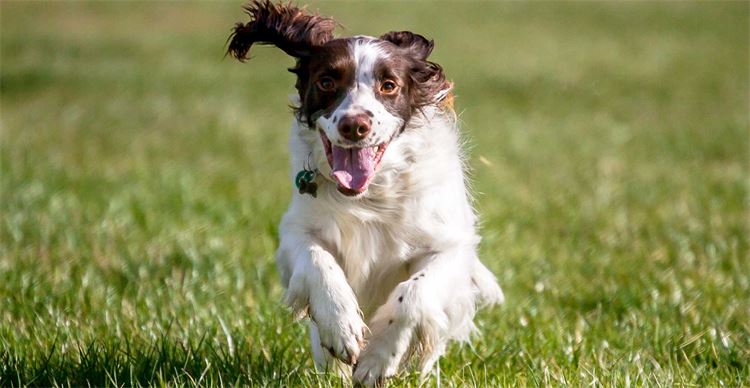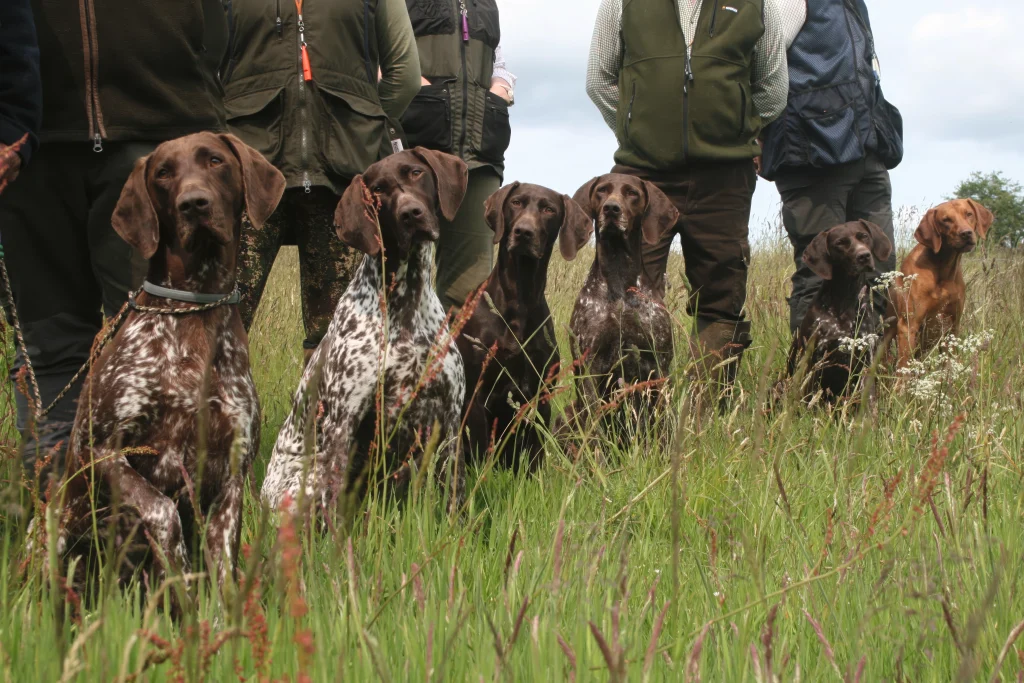Steadiness training for gun dogs
It is in a dog's nature to push the boundaries every now and then, says Fieldfare. So it's necessary to ensure that their steadiness is maintained.

(Photo credit: Ben Cole)
Think of it as being like a length of elastic that gets stretched and stretched, often to breaking point, by the excitements of the season. However good the link between dog and handler – and there is no more critical element than steadiness – work in the field puts it under strain.
Even the most trustworthy dogs can come to feel that they know best when a bird has been hit: and once they start managing themselves you no longer have an agreeable shooting companion.
To have a dog that does not need to be tethered in any way, and yet does not retrieve or hunt until told should be every Gun’s ambition, and it’s not a wild or fanciful one. There is no mystery to steadiness and, whether you are training a young dog or reminding an older one whose standards have slipped, the strategy is broadly similar and a few key principles will see you home and dry.
What Is Steadiness Training For Dogs?
All dogs, especially working bred gundogs perhaps, have an instinct to chase something that is moving, capture it if possible, and carry it off to a location of their own choosing. Steadiness training is all about substituting that sequence for another, which has the dog waiting to be told to retrieve before bringing the game tenderly to hand.
Going against the dog’s natural inclinations, and achieving that virtuous sequence, involves breaking it down into its constituent parts and making various triggers like the sound of a shot, or the sight of something flying or moving, a signal to do nothing. Retrievers, in particular, need to appreciate that they are really pleasing you by sitting quietly, taking an interest but not acting on any stimuli.
The Start Of Steadiness Training
The first move, then, is to train your dog to sit promptly on command and not move until permitted. Sit and stay become, as it were, as near equivalent as makes no difference. You will then, as you re-assert the sit command, be able to throw a dummy or tennis ball behind you and, with a raised hand to emphasise the point, keep the dog sitting and congratulate it before collecting what you have thrown yourself. Praise again.
Work on that until you can confidently throw things in front between yourself and the dog and, before long, you will be able to throw dummies around the dog effectively simulating a drive where birds fall around the peg.
At this stage a bang or two will add to the realism and emphasise the dissociation we want to achieve between hearing shots and retrieving. Again, collect everything you have thrown yourself and praise the dog: not in a tokenistic way, but in a fulsome manner. The dog should be in no doubt that it is doing the right thing and pleasing you by doing nothing.
(Photo credit: Annette Parton)
Moving On To Retrieving
Where does retrieving come in all this, you may ask?
The best thing by far is if you can just lead the dog away from the area where you threw things and have it find a ball you have previously hidden upwind, or one you surreptitiously drop whilst the dog is working. Again, praise for success needs to be really positive.
All the time you will be emphasising the ‘sit’ command so that eventually, if the dog is running free and you throw something at the same time as you issue the command it is the latter rather than the instinct to chase which is acted on. You can then move on to calling the dog back to you and throwing something else before sending it for the original retrieve.
Everything you do is acting to underline the fact that the dog must follow your instructions rather than its own inclinations: and if it does that praise is assured. This means acting correctly is never taken for granted and the dog knows what to expect for complying.
Adding Variety To Steadiness Training
With a little imagination, you can vary the elements of the steadiness training sequence to keep the process interesting, and stop developing expectations which turn out to be correct about what is going to happen next.
In fact, if there is one principle which is a key to achieving steadiness in any breed of gundog, it is that if you ever get the sense that the dog is anticipating something you must do the opposite to make sure this expectation doesn’t become a habit.
Don’t, for instance, get into the habit of giving your dog longer retrieves to collect and shorter ones which you collect yourself to instil steadiness. Because it won’t be long before your dog works out that a longer throw is for it and it takes off in anticipation of being sent.
The Goals Of Gun Dog Steadiness Training
Before starting, or restarting, any steadiness training, think about what you are trying to achieve or re-train rather than doing it by automatic pilot and you won’t go far wrong. Having a clear goal in mind will help you identify habits or behaviours that are the source of problems and allow you to put steps in place to address them.
Always stay one step ahead of the dog: accentuate the positive and eliminate the negative, and you can have a shooting companion to be proud of. The Holy Grail of steadiness training is a process which takes a little while and which involves putting various elements together, but it is achievable.
(Photo credit: Amanda Smith)
How Much Steadiness Training Is Enough?
So, how much time should you give to your steadiness training sessions? ‘Little and often’ are the watchwords. Setting a reminder for every day and keeping it interesting is far more beneficial than spending 45 minutes at such drills every three or four days. Indeed, provided the point of it all is clear and the dog is really congratulated for doing the right thing, then a couple of times a day with a day off now and again would be fine.
I don’t reckon to make this sort of thing the subject of a special training session. It’s easy enough to build it into the dog’s daily exercise: you just need to take a few tennis balls with you.
If You’d Like To Know More About Steadiness Training
Steadiness training is just one kind of gundog training needed to make sure your companion behaves as expected during a hunt – as well as in day-to-day life. Many handlers take it upon themselves to train their dog to make sure they get the standards they’re looking for, and there are plenty of experts and resources to help achieve this.
If you’d like to know more about steadiness training, or any other training for your gundog, speak to the team at Gundog Journal and we’ll do our best to help.
Related Articles
Get the latest news delivered direct to your door
Subscribe to Gundog Journal
Unlock the full potential of your working dog with a subscription to Gundog Journal, the UK’s only dedicated magazine for gundog enthusiasts. Published bi-monthly, this authoritative resource delivers expert training advice, in-depth interviews with top trainers and veterinary guidance to help you nurture a stronger bond with your dog.
With stunning photography and thought-provoking content, Gundog Journal is your essential guide to understanding, training and celebrating your working dog.
Save 10% on shop price when you subscribe, with a choice of packages that work for you. Choose from Print & Digital or Digital only with each journal delivered directly to your door or via the app every other month, plus access to past issues with the digital back issue library.









